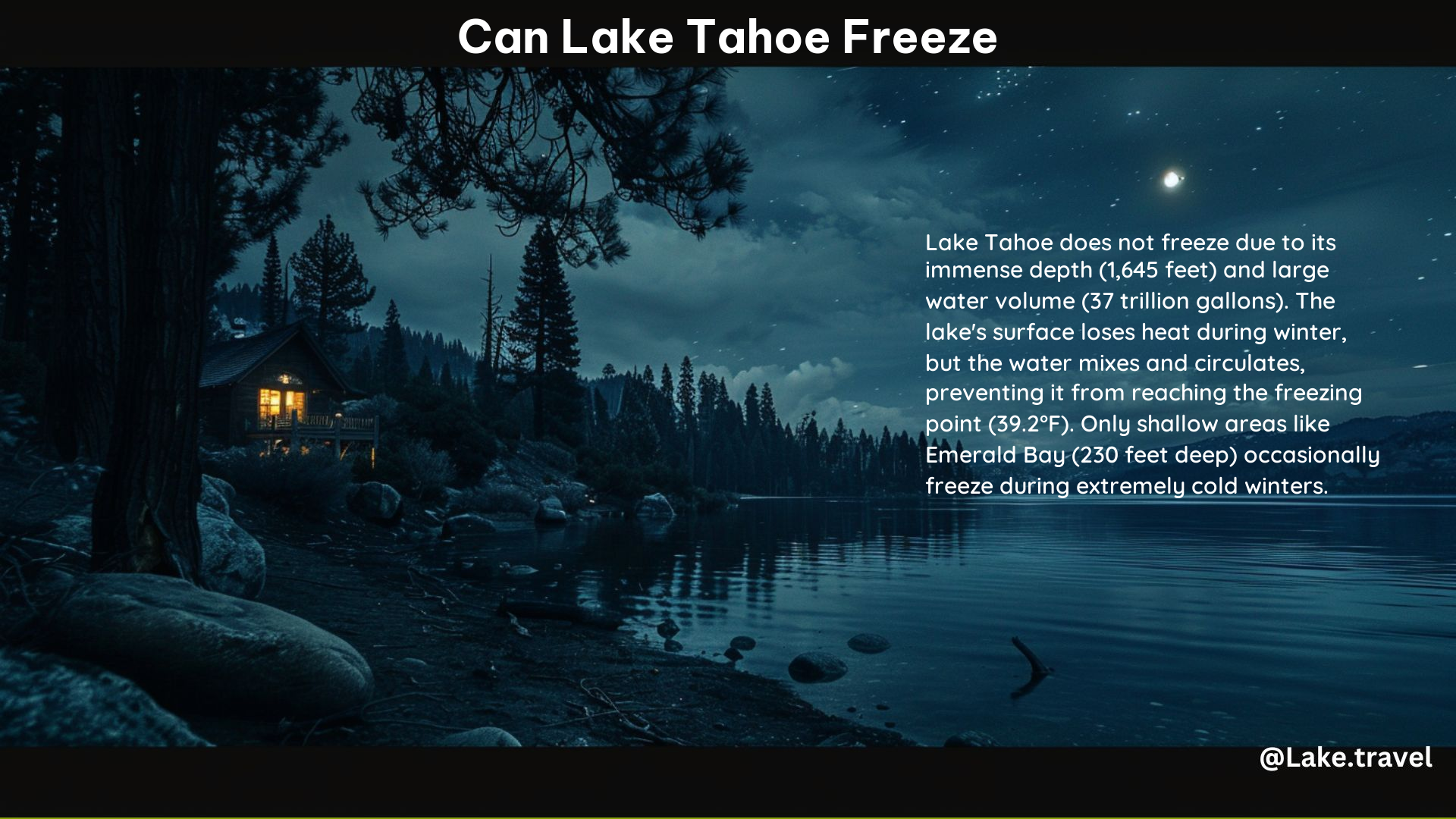Lake Tahoe, the second-deepest lake in the United States, is a popular destination for outdoor enthusiasts and nature lovers. However, one question that often arises is whether this massive body of water can actually freeze over. In this blog post, we’ll explore the reasons why Lake Tahoe is unlikely to freeze completely, even during the coldest winter months.
Depth: The Key Factor
The primary reason why Lake Tahoe does not freeze is its immense depth. With a maximum depth of 1,645 feet, the lake is simply too deep for the entire water column to reach the freezing point of 39.2 degrees Fahrenheit. This is because as the surface water cools, it becomes denser and sinks, replaced by warmer water from below. This process, known as “mixing,” prevents the entire water column from reaching the freezing temperature.
Thermodynamics: The Science Behind It

The thermodynamics of Lake Tahoe’s water play a crucial role in its inability to freeze. As the surface water cools, it becomes denser and sinks, while the warmer water from the depths rises to the surface. This constant mixing of the water column ensures that the entire lake does not reach the freezing point, even during the coldest winter months.
Size Matters
The sheer size of Lake Tahoe also contributes to its resistance to freezing. With a surface area of 122 square miles, the lake’s massive size makes it difficult for the entire body of water to cool uniformly. Smaller lakes, such as Emerald Bay, can freeze more easily because they lose heat faster and have a smaller volume of water to cool.
Winter Weather Patterns: A Mitigating Factor
The winter weather patterns in the Lake Tahoe region also play a role in preventing the lake from freezing. The area is known for its atmospheric rivers and storms, which bring in warmer air and disrupt the sustained cold temperatures necessary for the entire lake to freeze over. These weather patterns ensure that the lake remains unfrozen throughout the winter.
Partial Freezing: Emerald Bay’s Exception
While the main body of Lake Tahoe does not freeze, some areas, such as Emerald Bay, can occasionally experience partial freezing. Emerald Bay is a smaller, shallower body of water connected to the main lake, and its unique geography and depth make it more susceptible to freezing. However, even in these areas, the ice cover is typically thin and short-lived.
Conclusion
In conclusion, Lake Tahoe’s immense depth, thermodynamics, size, and winter weather patterns all contribute to its resistance to freezing. While some smaller, shallower areas like Emerald Bay may experience partial freezing, the main body of the lake remains unfrozen throughout the year, providing a stunning natural landscape for visitors to enjoy.
